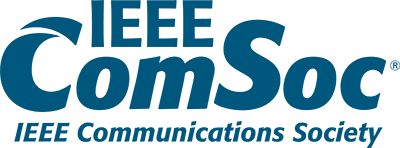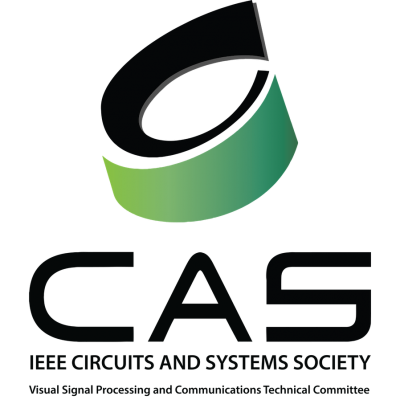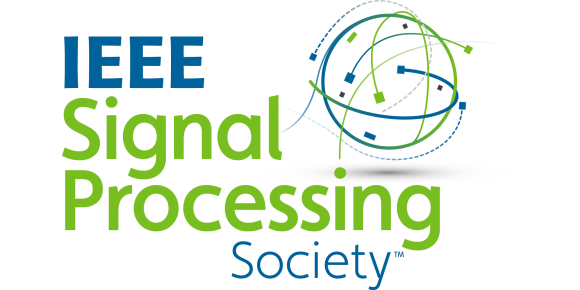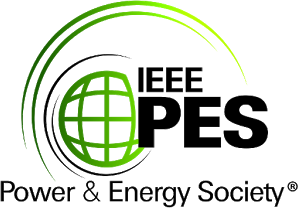The majority of the speakers for the Summit are chosen by invitation. However, the Summit will also accommodate a limited number of additional speakers whose presentations address the subjects we have listed above and whose proposals for presentations align with the theme of the Summit. If you wish to submit a proposal for inclusion in the Summit, please reach out to one of the chairs below. We require all speakers and attendees to register for the Summit. Submissions for talk ideas and speaker nominations should be directed to:
Adam T. Drobot (adam.drobot@opentechworks.com)
J.-C Chiao (jchiao@smu.edu)
Jasmin Grosinger (jasmin.grosinger@tugraz.at)
Charlie Jackson (cornetto45@earthlink.net)
Dr. Sara Amendola, Co-founder and CEO of RADIO6ENSE, Rome, Italy
Talk Title: Catalyzing the Integration of Zero-Power Wireless Sensors into medical devices and pharmaceuticals to enhance Personalized Medicine
Abstract: The convergence of flexible electronics, materials science, and wireless communications has paved the way for the dematerialization of body-centric devices, enabling their seamless integration over the skin or within the human body. This breakthrough holds immense potential for advancements in prediction, prevention, and personalized care.
A pivotal role in expediting the adoption of these scientific innovations is played by university spin-offs and SMEs, which transform the most mature research outcomes into value-driven solutions for the industrial market.
Inspired by the decade-long journey of Radio6ense, a spin-off from the University of Tor Vergata, this presentation will explore the innovation lifecycle - from the initial ideation phase, the realization of proof of concept, up to the industrialization - to provide the upcoming generation of medical devices with zero-power / battery-less sensors able to generate and wirelessly transmit sensing data.
Through pioneering projects involving major players in the healthcare sector, we will explain how Radio Frequency Identification (RFID) technology in the UHF band can be harnessed to transform orthopedic fixators, catheters or plasters into natively digital devices capable of predicting infections.
Finally, illustrative examples in the pharmaceutical industry will be presented, showcasing the application of miniature probes, designed to mimic pharmaceutical pills and monitor in-package microenvironments to ensure quality, safety, and efficacy of new drugs.
Biography: Sara Amendola received her M.Sc. (Hons.) in Medical Engineering from University of Rome Tor Vergata in 2013, and her PhD in Electromagnetics (Hons.) in 2017 for her work on Bio-integrated wireless Sensors. She has worked on mm-size telemetry for BMI implants (2013, Tampere University of Technology) and on micro-fabrication of epidermal devices (2015, ESIEE Paris). She is the Industry Activity Chair of the new IEEE-RFID TC on Additively Manufactured Electronics Systems. She is Contract Professor at UdT teaching RF technologies since 2021. She is co-author of more than 30 journal articles and co-inventor of 7 patents.
She is Co-founder and CEO of RADIO6ENSE - a University spin-off aimed at technology transfer of RF sensing technologies. In a context of Open Innovation with leading international companies in the automotive, manufacturing, medical sectors she manages high-end R&D projects, from activity proposals up to development of future business scenarios.
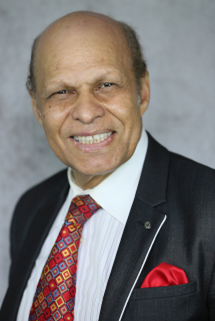 Dr. Magdy A. Bayoumi, Department Head and Professor, Department of Electrical and Computer Engineering, University of Louisiana at Lafayette, Lafayette, Louisiana, USA
Dr. Magdy A. Bayoumi, Department Head and Professor, Department of Electrical and Computer Engineering, University of Louisiana at Lafayette, Lafayette, Louisiana, USA
Talk Title: Internet of the Brain for epileptic seizure prediction.
Abstract: Epilepsy is a neurological disorder that affects about 50 million people around the globe. Epileptic seizure prediction reduces the risk associated with the sudden occurrence of the seizure that might threaten a patient’s life. The current seizure prediction methods are computation-intensive due to extracting the complicated hand-crafted features and require large memory for storing their parameters, which make them inappropriate for constrained IoT and wearable devices. In this paper, we introduce an IoT framework for accurate epileptic seizure prediction system based on deep learning. In the proposed system, the feature extraction and classification stages are combined in one integrated system in which raw EEG signals are applied without any preprocessing which further decreases the computation complexity. We developed a Convolutional Neural Network (CNN) based model that extracts the important spatio-temporal features from the non-stationary and nonlinear EEG signals. A channel selection algorithm is proposed to reduce the complexity and the memory required for the system to accommodate the real-time application. An alarm to an incoming seizure is generated and sent to the doctor and any chosen emergency service. Also, the history of the patient is being uploaded to the cloud to be revised by the doctor periodically. The high accuracy of the proposed prediction system of 96.1% makes our system a good candidate for IoT based wearable seizure prediction device.
Biography: Magdy A. Bayoumi is the Department Head of the W. H. Hall Department of Electrical & Computer Engineering and the W.H. Hall Endowed Chair in Computer Engineering. He has been a faculty member at the University of Louisiana at Lafayette since 1985 and has served as: the Director of the Center for Advanced Computer Studies (CACS); the Department Head of Computer Science Department; the Loflin Eminent Scholar Endowed Chair in Computer Science; and as the Admiston Professor in Computer Science and Lamson Professor in Computer Engineering. He received his B.Sc. and M.Sc. degrees in Electrical Engineering from Cairo University, Egypt; M.Sc. degree in Computer Engineering from Washington University, St. Louis; and Ph.D. degree in Electrical Engineering from the University of Windsor, Canada.
Bayoumi is an IEEE Fellow. He has served in many capacities in the IEEE Computer, Signal Processing, and Circuits & Systems (CAS) societies, the most recent are the vice president of Technical Activities of IEEE RFID council and he was on the IEEE RFID Distinguished Lecture Program (DLP). He was, also, on the DLP program of IEEE Computer and CAS societies. He was a member of IEEE IoT Activity Board and on the steering committee of IEEE IoT journal. Bayoumi has received many awards, among them, the IEEE CAS Education award, and the IEEE CAS Distinguished Service award. He was on the IEEE Fellow Selection Committee. Bayoumi has been an ABET evaluator and he was an ABET commissioner and team chair. He has given numerous keynote/invited lectures and talks nationally and internationally. Bayoumi was the general chair of more than 25 IEEE conferences, including the IEEE World Forum on IoT.
J.-C. Chiao, Southern Methodist University, Dallas, TX, USA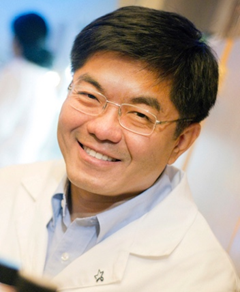
Talk Title: Microwave Technologies in Medical Applications
Abstract: In this presentation, examples of signal and data communication for implants and wearables through the human body, electromagnetic energy transfer through tissues to power implants, noninvasive physical and biochemical sensing will be discussed. These applications of electromagnetic waves, enabling continuous sensing of human body to provide health condition feedback, are suitable for healthcare IoT implementation to achieve ubiquitous management of symptoms and fitness needs. Personalized care systems that can cover a large population while empowering individual patients can significantly impact healthcare and human well-being.
Biography: J.-C. Chiao is Mary and Richard Templeton Centennial Chair of Electrical and Computer Engineering at Southern Methodist University (SMU). He received his Ph.D. at Caltech and was with Bellcore, the University of Hawaii-Manoa, and Chorum Technologies. He was Greene endowed professor of Electrical Engineering at the University of Texas - Arlington in 2002–18. Dr. Chiao has published more than 260 peer-reviewed papers and received 20 U.S. patents. He was honored with the O'Donnell Award in Engineering presented by The Academy of Medicine, Engineering and Science of Texas. He also received the Tech Titan Technology Innovator Award; Pan-Wen Yuan Excellence in Research Award; Lockheed Martin Aeronautics Excellence in Engineering Teaching Award; Research in Medicine milestone award by Heroes of Healthcare; IEEE MTT Distinguished Microwave Lecturer; IEEE Sensors Council Distinguished Lecturer; IEEE Region 5 Outstanding Engineering Educator and individual Achievement awards. He served as the founding Editor-in-Chief of the IEEE Journal of Electromagnetics, RF and Microwaves in Medicine and Biology; and chaired the 2022 IEEE Sensors Conference. He is Fellow of IEEE, IET, SPIE, NAI and AIMBE.
Dr. Jose Luis Contreras-Vidal, Fellow IEEE, Fellow AIMBE, Hugh Roy and Lillie Cranz Cullen Distinguished Professor, Director, NSF IUCRC BRAIN Center, University of Huston, Huston, Texas, USA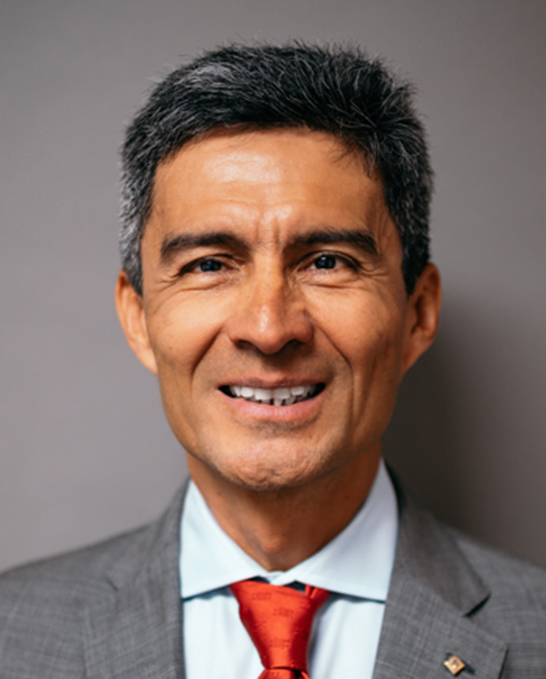
Talk Title: Integration of Brain Computer Interfaces in IoT
Abstract: The Internet of Things (IoT) promises extensive societal benefits through Human-Machine interactions. However, a significant segment of the population faces marginalization due to challenges in engaging with machines—be it technical literacy barriers or limitations in mobility and communication. Brain-Computer Interfaces (BCI) is expected to widen the segment of society to actively partake in this technological revolution. Here BCIs are envisioned to establish direct communication channels between the human brain and IoT devices. This talk introduces the initial strides made with the NeuroExo system, wherein a user's intent drives a robotic arm's movement. The results, challenges, lessons learned, and future endeavors necessary for achieving seamless integration of BCI systems in IoT are presented.
Biography: Jose L. Contreras-Vidal, Ph.D., earned his Engineer’s degree from the Tecnologico de Monterrey (Mexico), the MSEE degree at the University of Colorado – Boulder, and the Ph.D. degree in Cognitive and Neural Systems from Boston University in 1994. He pursed postdoctoral training in computational clinical neuroscience at Arizona State University and the University of Fribourg (Switzerland). He was a fellow of the Instituto Iberoamericano, the Human Frontier Science Program (HFSP), the International Brain Research Organization (IBRO), and the Institut National de la Santé et de la Recherche Médicale (INSERM). He was City of Paris Senior Fellow pursuing neuroimaging research at UMR-742 INSERM, Université Pierre et Marie Curie, Paris, France. Dr. Contreras-Vidal is the Founder and Director of the Industry University Cooperative Research Center for Building Reliable Advances and Innovations in Neurotechnologies (IUCRC BRAIN) at the University of Houston funded in part by the National Science Foundation. He is also the PI and Director of the NSF REU Site Neurotechnologies to Help the Body Move, Heal, and Feel Again, to provide research opportunities for undergraduate students from under-represented groups. Dr. Contreras-Vidal was elected to the rank of Fellow by the Institute of Electrical and Electronics Engineers (IEEE) for his contributions to brain-machine interfaces (BMI) and wearable exoskeletons, and to the College of Fellows of the American Institute of Medical and Biological Engineers (AIMBE) for pioneering contributions to development of brain-machine interfaces for controlling wearable exoskeletons for rehabilitation, and for mapping art-evoked brain activity.
Dr. Contreras-Vidal regularly serves in NSF and NIH review panels, and he is currently a member of the NIH’s National Advisory Board on Medical Rehabilitation Research (NABMRR). The Board advises the directors of NIH, NICHD, and the National Center for Medical Rehabilitation Research (NCMRR) on matters and policies relating to NCMRR’s programs. He also serves in the editorial boards of IEEE Human Machine Systems, Frontiers in Neuroprosthetics, the International Journal of Mobile Computer Interaction, and Brain-Computer Interfaces. Dr. Contreras-Vidal’s innovative and transformative research in BMI, neuroprosthetics, and wearable exoskeletons has led to four patents (US 11,052,249, US 20150012111 A1, US D783820 S1, and US 9468541) and 2 patents pending (WO2017218661A1; PCT/US2017/037457). Dr. Contreras-Vidal has been a PI on federally funded grants (NIH, NSF, DARPA) for 20+ years, and his work has also been supported by industry and foundations. Dr. Contreras-Vidal’s research is highlighted regularly in the scientific and public media, including The Economist, NPR, Nature, Science, New York Times, National Public Radio, the Society for Neuroscience, and the Wall Street Journal to name a few. His career in biomedical engineering has been profiled in Science.
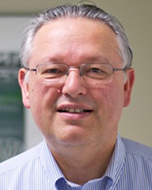 Adam Drobot, Chairman, OpenTechWorks Inc., Wayne, Pennsylvania, USA
Adam Drobot, Chairman, OpenTechWorks Inc., Wayne, Pennsylvania, USA
Talk Title: Technologies that drive the Internet of Things and Intelligent Biomedical Applications.
Abstract: The Internet of Things is one of the building blocks for Intelligent Biomedical Applications. Successful products and services depend on the skills and knowledge in the Biomedical fields, covering the practice of medicine, public health, personal lifestyle, environmental exposure, and basic and clinical biomedical research. They also depend on multi-disciplinary technical knowhow that covers a wide range of engineering domains and technologies ranging from material science to electronics, to information technology, and to the latest developments in Artificial Intelligence. The talk will cover and highlight important aspects of IoT technologies that address sensing modalities, signal and data processing, and networking with a focus on Biomedical Applications as well as sensing and actuator techniques that cover the electromagnetic spectrum.
Biography: Adam is the Chairman of the Board of OpenTechWorks, Inc. He serves on the Boards of multiple early-stage companies. His activities are strategic consulting, start-ups, non-profits, and industry associations. In the past he was the President of Applied Research at Telcordia Technologies (Bellcore) and the company’s CTO, and before that the Senior Vice President for Science and Technology at SAIC/LEIDOS.
Adam is a current member of the FCC Technological Advisory Council where he Co-Chairs the Working Group on Artificial Intelligence; the University of Texas Physics Department Advisory Council; and Chairman of FAMES USA a non-profit that organizes programs to attract disadvantaged youths to careers in STEM fields. In the past, he was on the Boards of the Telecommunications Industry Association (TIA) where he Chaired the Technology Committee; the Association for Telecommunications Industry Solutions (ATIS); the New Jersey Technology Council; the US DoT ITS Program Advisory Committee, and the University of Michigan Transportation Research Institute External Advisory Board.
Over the years he has been active in IEEE and served as the Chair of, multiple Committees including the IEEE IoT Activities Board, and multiple major conferences such as the IEEE World Forum on IoT. He is currently a member of the IEEE Press Editorial Board. He has published over 150 journal articles and holds 27 patents. He is a fellow of the American Physical Society. His degrees include a BA in Engineering Physics from Cornell University and a PhD. in Plasma Physics from the University of Texas.
Dr. Jessica Falcone, Program Director, Bioengineering Division National Institute of Biomedical Imaging and Bioengineering (NIBIB), National Institutes of Health (NIH), United States
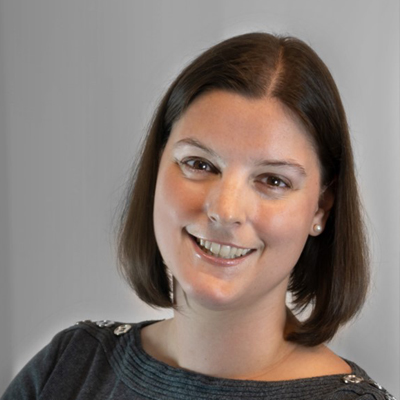 Talk Title: Introduction to the NIBIB at NIH: Medical Devices Program and Grant Mechanisms
Talk Title: Introduction to the NIBIB at NIH: Medical Devices Program and Grant Mechanisms
Abstract: This talk will introduce the National Institute of Biomedical Imaging and Bioengineering (NIBIB) and discuss the institute’s mission. NIBIB is comprised of four divisions: bioimaging, bioengineering, informatics, and training. Key portfolios will be highlighted from each division, such as medical devices (which encompasses bioelectronics, stimulators, and implantable sensors) and digital health (which encompasses wearables and AI/ML for mobile health and telehealth). Examples of NIBIB grant funded technologies will also be presented. The second half of the talk will focus on NIH and NIBIB-specific grant mechanisms, such as research grants (which will include the NIBIB R21 Trailblazer), small business grants, and training awards. Additional program officer contacts for the various portfolios and awards will also be provided.
Biography: Dr. Jessica Falcone serves as a program director for NIBIB’s Division of Discovery Science and Technology. Dr. Falcone has a background in neural engineering and neuroscience. She received her Ph.D. from the Georgia Institute of Technology, where she studied brain electrodes and how to modulate the immune response and blood-brain barrier to extend chronic recordings. She then joined the Bioelectronic Medicine group at the Feinstein Institute of Medical Research and worked on chronic vagus nerve electrodes for murine models. Most recently, Dr. Falcone was a Technical Sales Engineer at Tucker-Davis Technologies (TDT) – a company that builds research systems for neuroscientists. Her technical expertise at TDT included electrophysiology, fiber photometry, auditory, and behavioral control.
José González-España, PhD, Noninvasive Brain-Machine Interface Systems Lab, University of Houston, Houston, USA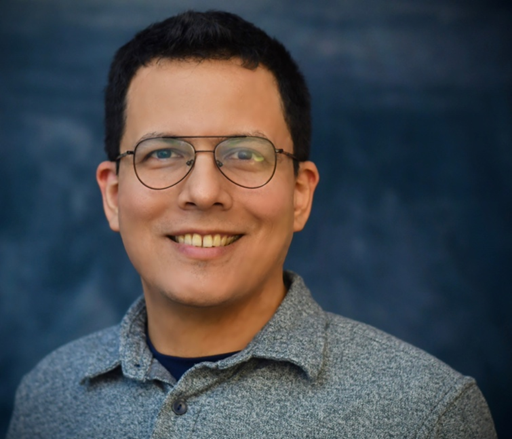
Talk Title: Integration of Brain Computer Interfaces in IoT
Abstract: The Internet of Things (IoT) promises extensive societal benefits through Human-Machine interactions. However, a significant segment of the population faces marginalization due to challenges in engaging with machines—be it technical literacy barriers or limitations in mobility and communication. Brain-Computer Interfaces (BCI) is expected to widen the segment of society to actively partake in this technological revolution. Here BCIs are envisioned to establish direct communication channels between the human brain and IoT devices. This talk introduces the initial strides made with the NeuroExo system, wherein a user's intent drives a robotic arm's movement. The results, challenges, lessons learned, and future endeavors necessary for achieving seamless integration of BCI systems in IoT are presented.
Biography: Juan Jose Gonzalez Espana is currently a PhD candidate in Electrical and Computer Engineering (ECE) at the University of Houston. He previously received his M.S. in ECE from Rice University, his M.S. in Computer Science from Universidad Nacional de Colombia and his B.S. in Electronics Engineering from Universidad de San Buenaventura. His research involves the integration of Brain Computer Interfaces (BCI) in Internet of Things (IoT). His interests include BCI, IoT, Embedded Systems, Machine Learning, and Energy Harvesting.
J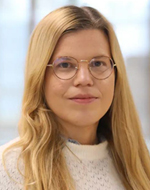 asmin Grosinger, Institute of Microwave and Photonic Engineering, Graz University of Technology, Graz, Austria and Tohoku University, Chen Kono Laboratory, Sendai, Japan
asmin Grosinger, Institute of Microwave and Photonic Engineering, Graz University of Technology, Graz, Austria and Tohoku University, Chen Kono Laboratory, Sendai, Japan
Talk Title: RF Design for Intelligent Biomedical Applications.
Abstract: This presentation showcases radio frequency (RF) design solutions for developing wireless sensor nodes in biomedical applications. These solutions address sustainability issues arising from the widespread deployment of wireless sensor nodes in the healthcare industry. By applying these RF design solutions, biomedical engineers can improve the ultra-low-power operation of these nodes, avoid the eco-toxicity of batteries, and reduce maintenance costs associated with battery replacement. The solutions offer high-level integration based on system-on-chip and system-in-package concepts in low-cost complementary metal-oxide-semiconductor technologies. These concepts help limit the cost and footprint of nodes, making them more accessible and less intrusive.
Specifically, the presentation will cover solutions for ultra-low-power wireless communication systems based on high-frequency (HF) and ultra-high frequency (UHF) radio frequency identification (RFID) technologies. The talk will offer RF design solutions for HF and UHF RFID systems, revealing how to develop passive miniaturized biomedical sensor nodes that operate robustly in harsh application environments.
Biography: Jasmin Grosinger is an Associate Professor at the Graz University of Technology in Austria and a Visiting Associate Professor at the Tohoku University in Sendai, Japan. She earned her MSc from the Vienna University of Technology and worked as a Project Assistant with the Institute of Telecommunications. She later became a Laboratory Associate with Disney Research in Pittsburgh, USA. In 2012, she received her PhD from the Vienna University of Technology. Since 2013, she has researched (ultra-)low-power microwave components and systems at Graz University of Technology’s Institute of Microwave and Photonic Engineering. Jasmin has also been a Guest Professor at Friedrich-Alexander-University Erlangen-Nuremberg’s Institute of Electronics Engineering. She is an IEEE Senior Member, and her research has resulted in more than 80 peer-reviewed publications and one US patent. Jasmin is actively involved in the Technical Program and Steering Committees of various microwave-related conferences and is an Associate Editor of the IEEE Microwave and Wireless Technology Letters. She is also a member of the IEEE Microwave Theory and Techniques Society (MTT-S) and was selected as a Distinguished Microwave Lecturer. In 2022, Jasmin served as the MTT-S S Administrative Committee (AdCom) Secretary. Since 2023, she has served as an Elected Voting Member of the IEEE MTT-S AdCom, chairing the Meetings and Symposia Committee in 2024.
Scott Hanson, Chief Technology Officer and founder of Ambiq, United States
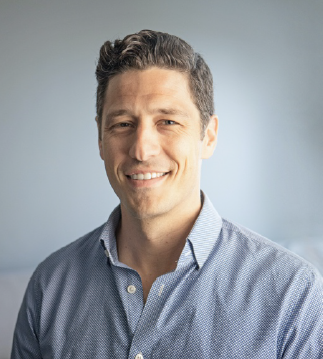 Talk Title: Bringing Your Doctor and Personal Trainer to Your Wrist With SPOT
Talk Title: Bringing Your Doctor and Personal Trainer to Your Wrist With SPOT
Abstract: What happens to healthcare when you can embed your doctor on your wrist? How does your fitness evolve when your personal trainer also lives on your wrist? The latest innovations in nanopower circuits and lightweight endpoint AI have created an unmatched opportunity in the medical space. Scott Hanson, CTO and founder of Ambiq, will explore how the latest evolutions in these technologies are combining to bring both your doctor and your personal trainer to your wrist. He will begin with an overview of current intelligent endpoint devices that help people manage/monitor their health and the role manufacturers play in developing these technologies. He’ll discuss the traditional process of AI computing (inference performed on a server) vs. the benefits of performing inferencing directly on the device. He’ll transition into the challenges faced by these biomedical devices (e.g., the energy requirement from inferencing draining the battery). He’ll discuss how Ambiq attacks these challenges with its Sub-threshold Power Optimized Technology (SPOT) platform and the Apollo SoC family. Scott will end with a discussion on how innovative low power SoCs will combine with ultra-efficient on-board inference to enable the next generation of medical devices and truly preventative health care.
Biography: Scott Hanson is the Chief Technology Officer and founder of Ambiq. Scott invented SPOT, Ambiq’s core sub-threshold technology platform, to enable the world’s most energy-efficient chips during his PhD studies at the University of Michigan. He founded Ambiq in 2010 and led the development of the world record-setting Apollo, Ambiq's first flagship processor. Under Scott's leadership, Ambiq has shipped more than 100 million chips to the world's top brands and has grown into the global leader in ultra-low power solutions.
In addition to his role as CTO, he has variously played roles leading product definition and development, managing production test, and, most importantly, spending a great deal of time with customers to understand their needs and their vision. As a widely recognized innovator in low power circuits, Scott today leads the development of Ambiq's technology roadmap.
Scott's pioneering work in sub-threshold design and picowatt processors has been widely published, with more than 30 leading publications, more than 20 patents on related technology, and a wide variety of speaking engagements. Scott's work was honored by the University of Michigan with the 2014 Arbor Networks PhD Research Impact Award and the 2020 ECE Alumni Rising Star Award and was honored by Ernst & Young as an Entrepreneur of the Year 2020 finalist.
Florence Hudson, Founder and CEO FDHint, LLC and Executive Director, Columbia University, New York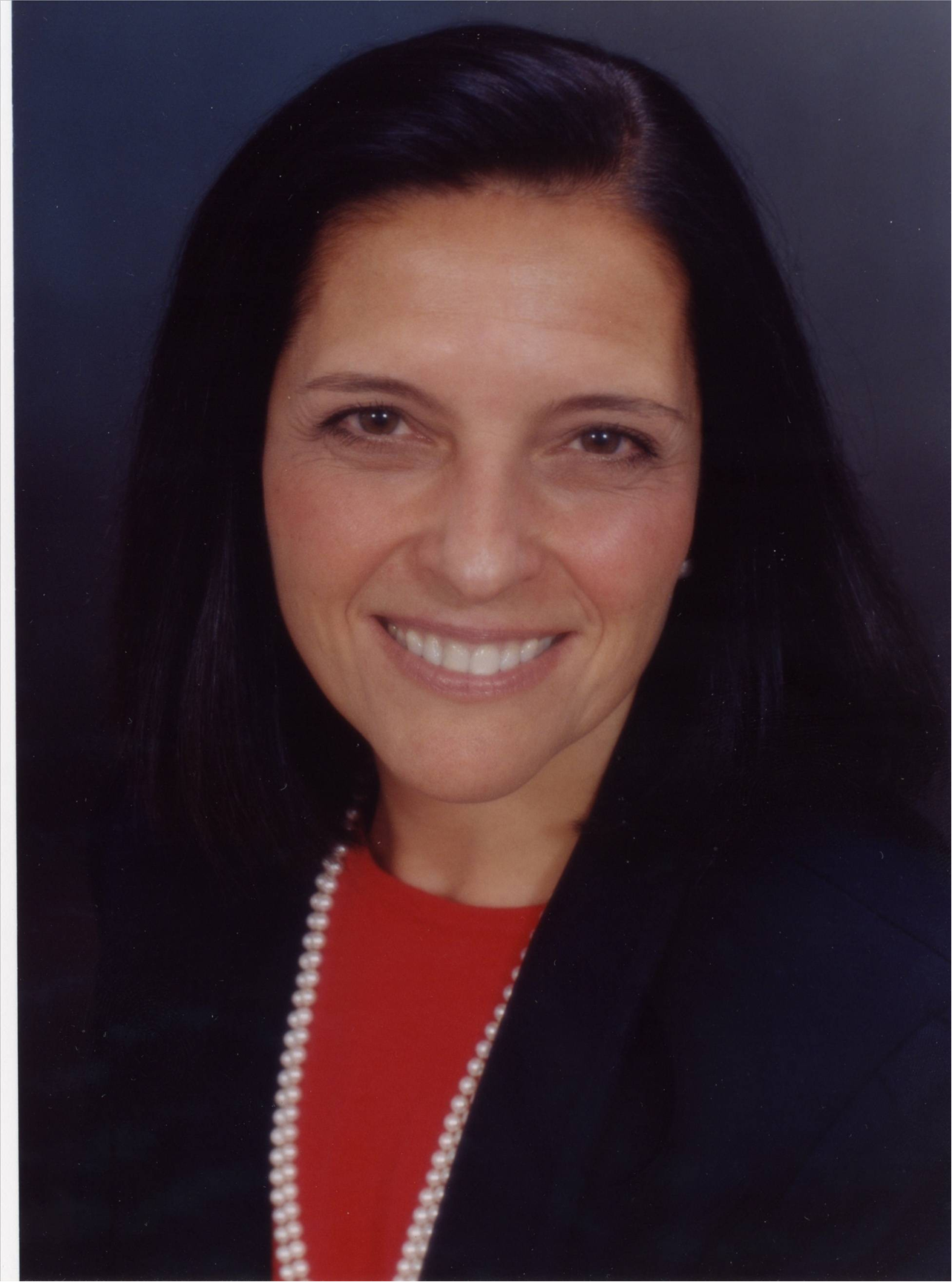
Talk Title: Developing Standards to Improve TIPPSS for Connected Healthcare - Trust, Identity, Privacy, Protection, Safety and Security
Abstract: Smart biomedical devices and systems are enabling impressive advances in connected healthcare and precision medicine to improve healthcare outcomes. Yet, these connected devices add attack vectors which increase the vulnerability of the system, the security and privacy risk associated with devices and data, and patient safety. IEEE is partnering with Underwriters Laboratories (UL) to develop a standard for clinical Internet of Things data and device interoperability with TIPPSS - Trust, Identity, Privacy, Protection, Safety and Security - to mitigate these risks and the potential compromise of data and devices. Join us to learn about the standard development effort for clinical IoT, and the future development of TIPPSS standards in additional domains including decentralized clinical trials, smart agriculture, the energy grid, and connected vehicles.
Biography: Florence Hudson is Executive Director and Principal Investigator for the Northeast Big Data Innovation Hub and the COVID Information Commons at Columbia University funded by the US National Science Foundation, National Institutes of Health, and Department of Transportation Federal HighWay Authority. She is also Founder and CEO of FDHint, LLC, a global advanced technology and diversity & inclusion consulting firm. She Chairs the IEEE Working Group on Clinical Internet of Things Data and Device Interoperability with TIPPSS (Trust, Identity, Privacy, Protection, Safety and Security) and is on the IEEE Engineering in Medicine and Biology Standards Committee. She is a former IBM Vice President and Chief Technology Officer, Internet2 Senior Vice President and Chief Innovation Officer, Special Advisor for the NSF Cybersecurity Center of Excellence, and aerospace engineer at the NASA Jet Propulsion Lab and Grumman Aerospace Corporation. She is a globally renowned speaker and lecturer for data science, big data and analytics, research collaboration, connected healthcare, cybersecurity, energy and the environment, Internet of Things (IoT), and diversity & inclusion. She is Editor in Chief for two Springer books on Women Securing the Future with TIPPSS for IoT and Connected Healthcare focusing on trust, identity, privacy, protection, safety and security. She is an experienced Board Director (NASDAQ: IEC) and Trustee, and regularly serves on review panels for NSF and the US Department of Energy. She earned her Mechanical and Aerospace Engineering degree from Princeton University, and executive education certificates from Harvard Business School and Columbia University.
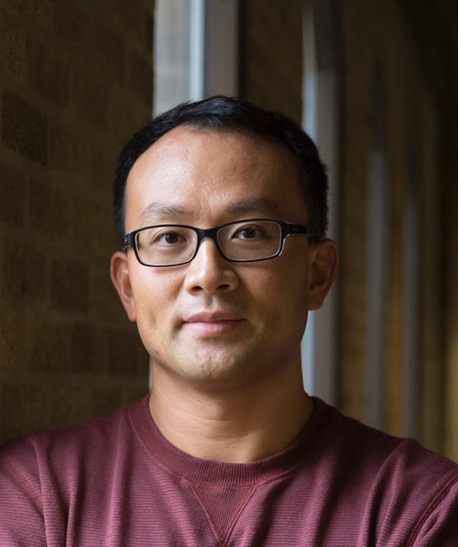 Changzhi Li, Professor, Texas Tech University, Lubbock, Texas, USA
Changzhi Li, Professor, Texas Tech University, Lubbock, Texas, USA
Talk Title: Recent Commercialization and Preclinical Studies of Biomedical Radar Sensors
Abstract: By remotely reading various life activities, radar sensors with state-of-the-art front-end and measurement algorithms have great potential to improve healthcare, security, and human-machine interface. This presentation will first provide an overview of the state-of-the-art smart radar sensors powered by advanced digital/RF beamforming, multiple-input and multiple-output (MIMO), inverse synthetic-aperture radar (ISAR) technique, and deep learning. A few examples based on interferometry, Doppler, and frequency-modulated continuous-wave (FMCW) modes at 5.8 GHz, 24 GHz, and 120 GHz will be discussed. In addition, the use of nonlinear technologies will be reported, with a focus on in-band third-order intermodulation measurement for enhanced target identification and parameter extraction. Commercialization activities and preclinical studies will be presented on veterinary medicine, sleep monitor, smart building occupancy detection, non-contact human-computer interface, preterm baby monitoring, and blood pressure monitoring. Finally, this talk will conclude with future industrial and academic R&D outlooks for microwave short-range life activities sensing.
Biography: Changzhi Li received the B.S. degree in electrical engineering from Zhejiang University, China, and the Ph.D. degree in electrical engineering from the University of Florida, Gainesville, FL. He is a Professor at Texas Tech University. His research interests are microwave/millimeter-wave sensing for healthcare, security, energy efficiency, structural monitoring, and human-machine interface. He is an IEEE Microwave Theory and Techniques Society (MTT-S) Distinguished Microwave Lecturer, in the Tatsuo Itoh class of 2022-2024. He was a recipient of the IEEE MTT-S Outstanding Young Engineer Award, the IEEE Sensors Council Early Career Technical Achievement Award, the ASEE Frederick Emmons Terman Award, the IEEE-HKN Outstanding Young Professional Award, and the NSF Faculty Early CAREER Award. He is the General Chair of the 2024 IEEE Radio Wireless Week (RWW) in San Antonio, TX. Dr. Li is a Fellow of the IEEE and the National Academy of Inventors (NAI).
Prof. Patrick P. Mercier PI, Energy-Efficient Microsystems Lab Co-Director, Center for Wearable Sensors University of California, San Diego, United States
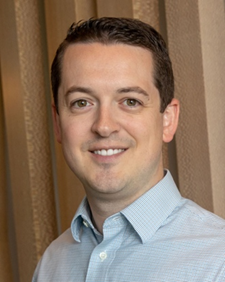 Talk Title: Low-Power Sensing and Wireless Communications Circuits
Talk Title: Low-Power Sensing and Wireless Communications Circuits
Abstract: Small IoT devices hold considerable promise to monitor anything from humans to environmental pollutants. However, most current devices only monitor a limited number of parameters that are, in many cases, only peripherally related to many health conditions or enterprises. Furthermore, many such devices may be large, bulky, and rigid, thereby precluding seamless integration into daily life.
Addressing these issues requires: 1) development of new sensor technologies that provide more actionable data in thin, flexible form factors; and 2) engineering of supporting electronic infrastructure to condition, digitize, and wirelessly communicate data in an extremely energy efficient manner. This presentation will discuss emerging sensor technologies that can non-invasively monitor physiochemistry (e.g., glucose, blood alcohol concentration, and lactate) in thin, flexible, and energy-efficiency wearable devices. We will also cover integrated circuit building blocks and architectures that make acquisition and telemetry of sensed information so energy-efficient that that they can be easily powered from new local energy sources (e.g., wearable glucose biofuel cells). Such net-zero-power operation will ultimately enable devices that are completely autonomous and invisible to the user, to the point where users are virtually unaware of their wearable devices after placement – in other words, they are “unawareable” devices.
Biography: Patrick Mercier is a Professor of Electrical and Computer Engineering and co-founder/co-director of the Center for Wearable Sensors and the Power Management Integration Center at UC San Diego. He received his B.Sc. degree from the University of Alberta, Canada, and the S.M. and Ph.D. degrees from MIT. Prof. Mercier has received numerous awards, including the International Solid-State Circuits Conference (ISSCC) Author Recognition Award, the San Diego Engineering Council Outstanding Engineer Award, an NSF CAREER Award, a Biocom Catalyst Award, a UCSD Academic Senate Distinguished Teaching Award, a DARPA Young Faculty Award, a Beckman Young Investigator Award, the ISSCC Jack Kilby Award, amongst others. He has published over 190 peer-reviewed papers in venues such as Science, Nature Biotechnology, Nature Biomedical Engineering, Nature Communications, ISSCC (26 papers), Advanced Science, and others. He is an Associate Editor of the IEEE Transactions on Biomedical Circuits and Systems and the IEEE Solid-State Circuits Letters, was a member of the ISSCC, CICC, and VLSI Technical Program Committees, and has co-edited three books: High-Density Integrated Electrocortical Neural Interfaces (Elsevier Academic Press, 2019), Power Management Integrated Circuits (CRC Press, 2016), and Ultra-Low-Power Short-Range Radios (Springer, 2015). His research interests include the design of energy-efficient mixed-signal systems, RF circuits, power converters, and sensor interfaces for wearable, medical, and mobile applications.
Prof. Gernot Müller-Putz, Graz University of Technology, Graz, Austria
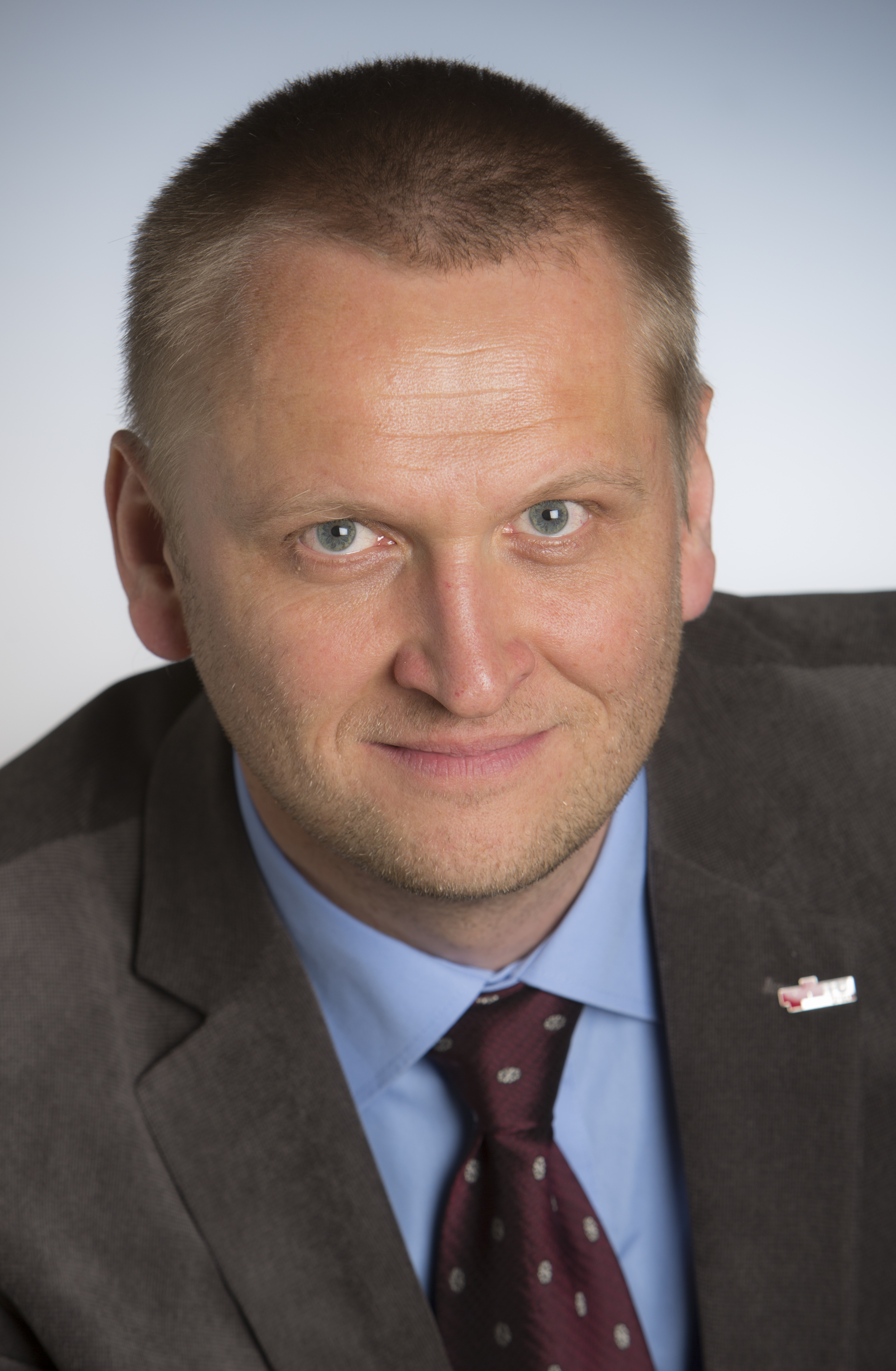 Talk Title: Non-invasive Brain-Computer Interfaces for movement control in paralyzed individuals: Graz' State of the Art
Talk Title: Non-invasive Brain-Computer Interfaces for movement control in paralyzed individuals: Graz' State of the Art
Abstract: In this presentation, I will discuss on the principal findings derived from the FeelYourReach Project, emphasizing goal-directed movements, trajectory decoding, error processing, kinesthetic feedback, detection of hand grasps, and closed-loop hybrid Brain-Computer Interface (BCI) control. Furthermore, I will showcase the results of the MoreGrap project in the realm of direct motor neuroprosthesis control. Concluding with a perspective on ongoing and prospective research, I will summarize the contents of this discourse.
Biography: Prof. Dr. Gernot Müller-Putz is head of the Institute of Neural Engineering and its associated Laboratory of Brain-Computer Interfaces. He received his MSc in electrical and biomedical engineering, his PhD in electrical engineering and his habilitation and “venia docendi” in medical informatics from Graz University of Technoloy. Since 2014 he is full professor for semantic data analysis. He interested in brain-computer interface research based on EEG and ECoG, mainly for movement restoration and re-establishing of communication. He has also managed numerouse international projects, mainly funded by EU. Furthermore, he organized and hosted the Graz Brain-Computer Interface Conference over the last two decades in Graz, the next one in preparation for 2024. In 2015, he was awarded with an ERC Consolidator Grant “Feel your Reach” from the European Research Council. In 2017 he received the Ludwig-Guttman Award from the German Medical Spinal Cord Injury Association (DMGP). He is currently member of the Board of Directors of the International Brain-Computer Interface Society, and he is founding member and scientific Co-Director of the NeuroIS Society. Since October 2023, he is Dean of the department for Computer Science and Biomedical Engineering at TU Graz.
Dr. Aydogan Ozcan, California NanoSystems Institute, UCLA, University of California, Los Angeles, California, United States
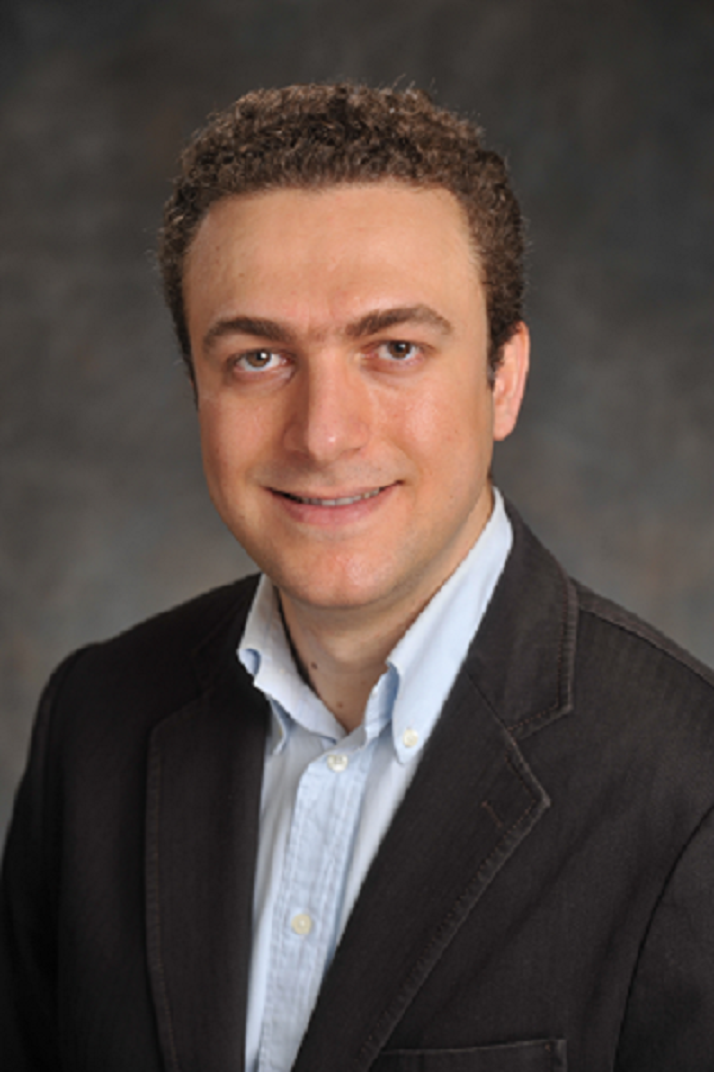 Talk Title: Computational Label-free Microscopy and Point-of-care Sensing
Talk Title: Computational Label-free Microscopy and Point-of-care Sensing
Abstract: In this presentation, I will provide an overview of our recent work on using deep neural networks in advancing computational microscopy and point-of-care sensing systems, also covering their biomedical applications. Specifically, I will discuss emerging opportunities to revolutionize tissue staining methods by digitally generating histological stains using trained deep neural networks, providing rapid, cost-effective, accurate and environmentally friendly alternatives to standard chemical tissue staining methods. These deep learning-based virtual staining techniques can successfully generate different types of histological stains, including immunohistochemical (IHC) stains, from label-free microscopic images of unstained samples by using, e.g., autofluorescence microscopy, quantitative phase imaging (QPI) and reflectance confocal microscopy. Our team also demonstrated similar approaches for transforming images of an already stained tissue sample into another type of stain, performing virtual stain-to-stain transformations. Finally, I will discuss our work on a paper-based vertical flow assay (VFA) platform enabled by AI for multiplexed and cost-effective sensing of a panel of biomarkers within ~15 min using a mobile phone-based device.
Biography: Dr. Aydogan Ozcan is the Chancellor’s Professor and the Volgenau Chair for Engineering Innovation at UCLA and an HHMI Professor with the Howard Hughes Medical Institute. He is also the Associate Director of the California NanoSystems Institute. Dr. Ozcan is elected Fellow of the National Academy of Inventors (NAI) and holds >70 issued/granted patents in microscopy, holography, computational imaging, sensing, mobile diagnostics, nonlinear optics and fiber-optics, and is also the author of one book and the co-author of >1000 peer-reviewed publications in leading scientific journals/conferences. Dr. Ozcan received major awards, including the Presidential Early Career Award for Scientists and Engineers (PECASE), International Commission for Optics ICO Prize, Dennis Gabor Award (SPIE), Joseph Fraunhofer Award & Robert M. Burley Prize (Optica), SPIE Biophotonics Technology Innovator Award, Rahmi Koc Science Medal, SPIE Early Career Achievement Award, Army Young Investigator Award, NSF CAREER Award, NIH Director’s New Innovator Award, Navy Young Investigator Award, IEEE Photonics Society Young Investigator Award and Distinguished Lecturer Award, National Geographic Emerging Explorer Award, National Academy of Engineering The Grainger Foundation Frontiers of Engineering Award and MIT’s TR35 Award for his seminal contributions to computational imaging, sensing and diagnostics. Dr. Ozcan is elected Fellow of Optica, AAAS, SPIE, IEEE, AIMBE, RSC, APS and the Guggenheim Foundation, and is a Lifetime Fellow Member of Optica, NAI, AAAS, and SPIE. Dr. Ozcan is also listed as a Highly Cited Researcher by Web of Science, Clarivate.
Prof. Milica Popović, McGill University, Montreal, Canada
 Talk Title: Microwave breast screening: simulations, hardware, experiments with phantoms and volunteers – what have we learned?
Talk Title: Microwave breast screening: simulations, hardware, experiments with phantoms and volunteers – what have we learned?
Abstract: Breast cancer is one of the most feared health issues for women today. The goal of the research conducted at McGill University in Montreal, Canada, is to develop a low-power RF wearable device, which can screen breast tissues monthly. With such frequent monitoring, it may be possible to detect potentially harmful tissue changes, i.e., early-stage tumors. The method relies on the reported inherent differences (in the electromagnetic sense) between the tumorous and healthy tissues at microwave (RF) frequencies. Since the underlying physical principle of this approach differs from those of the currently used methods in medical practice (X-ray mammography, MRI, ultrasound), its aim is to complement these techniques by compensating for their deficiencies. We will discuss the exciting potential of this promising new technique and the challenges of its practical implementation.
Biography: Prof. Milica Popović received her M.Eng. (EE, 1994) and PhD (EE, 2001) at Northwestern University, Evanston, Illinois, USA. Since 2001, she has been with the Department of Electrical and Computer Engineering at McGill University. She teaches courses on electromagnetic fields and waves, and antennas and propagation. In 2020, she received Samuel and Ida Fromson Outstanding Teaching Award in Engineering. Her research focuses on biomedical applications of electromagnetic theory. Prof. Popović is a Fellow of the World Innovation Foundation, a Senior Member of the IEEE and a member of the Professional Engineers of Ontario. For the IEEE Montreal Chapter, she has served as the as the Chair of IEEE Women in Engineering (WIE) and is presently the Chapter Chair for IEEE Engineering of Medicine and Biology Society (EMBS). She is a member of the technical program committee of IEEE Microwave Theory and Techniques MTT-28 Biological Effects and Medical Applications and Associate Editor for the IEEE Journal of Electromagnetics, RF and Microwaves in Medicine and Biology (IEEE J-ERM). Since 2020, Prof. Popović has held the position of the Associate Dean (Research and Innovation) of the Faculty of Engineering at McGill University.
Prof. Tobias Schreck, Institute of Computer Graphics and Knowledge Visualization at Graz University of Technology, Graz, Austria
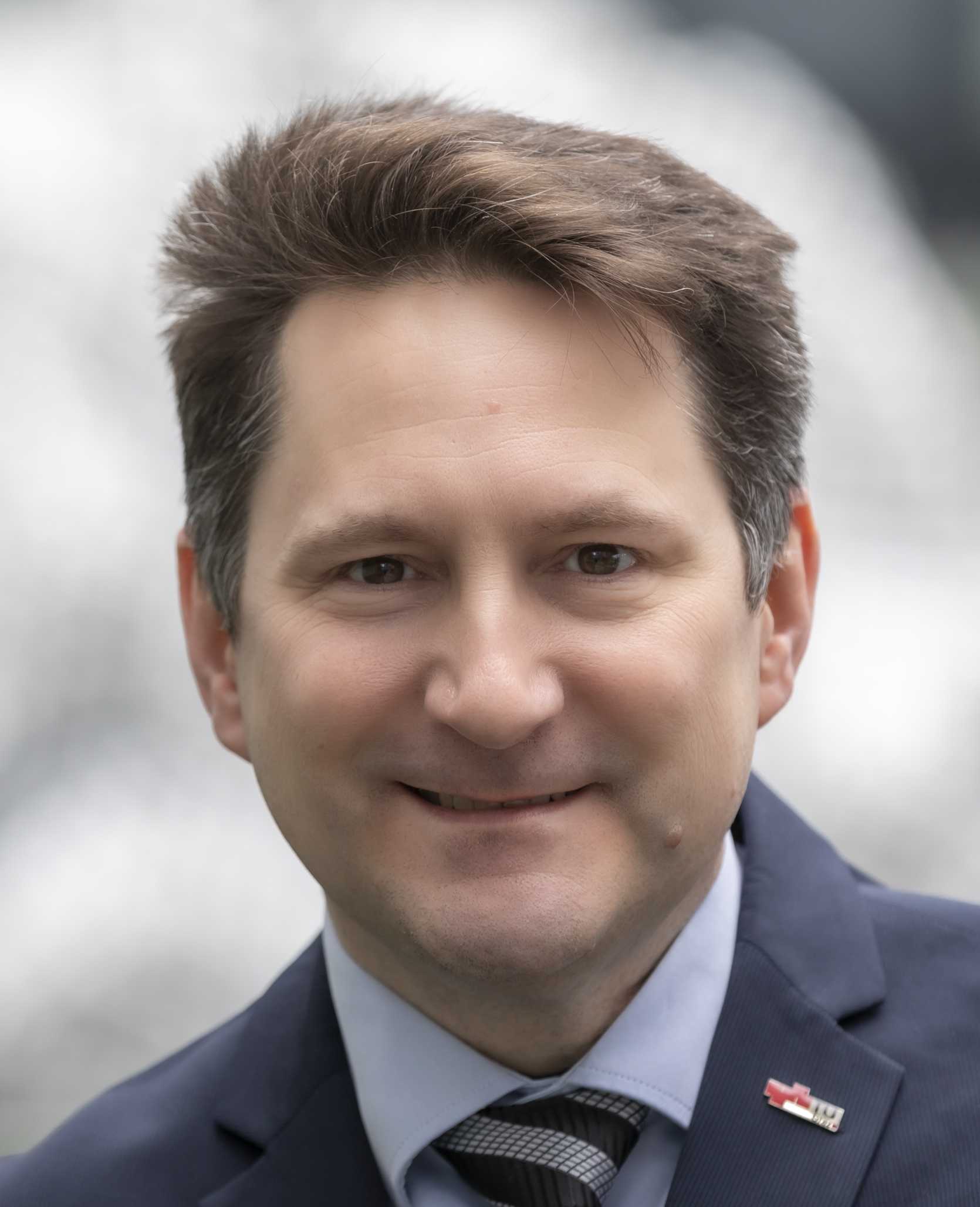 Talk Title: Navigation in Knowledge Spaces with Interactive and Adaptive Information Visualization
Talk Title: Navigation in Knowledge Spaces with Interactive and Adaptive Information Visualization
Abstract: A large part of the information of the world is available in documents, comprising text and visual information. Information Retrieval, Document Visualization, and Natural Language Processing are important fields in which much progress has been achieved regarding finding, understanding, and exploring documents and document collections. We report results from our research project A+CHIS: Human-Centered Interactive Adaptive Visual Approaches in High-Quality Health Information. In this project, we work on novel visual interactive document exploration approaches supporting the information seeking process of users in health-related topics. We develop a prototype which represents health information on different levels of detail, from keywords to word clouds, text excerpts, topic maps, and full texts. Users can interactively adapt the level of detail to their need. We also research novel approaches for automatically adapting the visual information display to the level of detail and information need of the user. To this end, we work on methods for observing user behavior based on input- and eye-tracking to understand the user information need. We introduce the current state of the prototype, and a belonging user study characterizing its usability and user acceptance.
Biography: Tobias Schreck is a Professor and head of the Institute of Computer Graphics and Knowledge Visualization at Graz University of Technology. He works in the areas of Visual Analytics, Information Visualization, and Applied 3D Object Retrieval. He leads several current research projects in the area funded by the Austrian Science Fund FWF, the Austrian Research Promotion Agency FFG, and the EU Horizon Europe Program. For example, in the FWF research group A+CHIS, he works with partners in cognitive psychology and health research, to develop effective, adaptive information visualization systems. In the FFG lead project PRESENT, he researches visual analysis of large time series data for different applications. In the upcoming EU Horizon project HEREDITARY, he works on visual analysis of distributed and heterogeneous biomedical research data. Tobias Schreck previously was Assistant Professor with University of Konstanz, Germany, and Postdoc Fellow with Technische Universität Darmstadt. He obtained a PhD in Computer Science in 2006 from the University of Konstanz.
Prof. Luciano Tarricone IEEE Fellow, University of Salento, Lecce, Italy
![]() Talk Title: Machine-Learning Techniques to Enhance High-Frequency Electroporation Treatments and Other Biomedical Applications
Talk Title: Machine-Learning Techniques to Enhance High-Frequency Electroporation Treatments and Other Biomedical Applications
Abstract: Microwave (MW) technologies are increasingly employed in biomedicine and healthcare. Applications such as MW ablation, MW sensors for real-time monitoring of physiological parameters and lab-on-a-chip devices, are just some examples in a wide variety of possibilities. Recently, high-frequency irreversible electroporation (H-FIRE) has been attracting more and more attention, due to its important applications in oncology. It uses pulsed electrical stimulating fields (PEFs) to induce a controlled but irreversible process of permeabilization of cell membranes, thus triggering a substantial alteration in the physiological equilibria of cells, ultimately leading to their death.
Despite its undoubted potential and the growing number of studies on this topic, several challenges still hinder a broader adoption of H-FIRE therapy. The considerable variety and complexity of the experimental settings and the limited extent of the investigations conducted so far in this field, leave an unfilled gap of knowledge that separates the achievable results from actual large-scale clinical applications.
The problem is of an impressive complexity, even though the scientific literature is rich, and the available knowledge and experience quite important. In other words, we have an important knowledge basis, not always fully exploited, and a complex problem with many variables to be optimized.
In order to tackle these challenges, Machine Learning (ML) techniques can be used to improve the effectiveness of H-FIRE experimental settings. Properly tuned, ML solutions can represent a viable preliminary evaluation for clinicians and researchers willing to narrow their trials to only the most promising experimental settings. More specifically, our aim is to benefit from the large pool of already performed H-FIRE experiments and to use it as a reliable knowledge base for evaluating and/or optimizing new H-FIRE experiments. Such an evaluation is made possible by training the adopted ML solution with the data and results of the experiments in the knowledge base. Several benefits can be achieved in this way: first, clinical trials can be reserved for only the most promising experimental configurations. Second, protocol customization can be reached by tuning ML optimization parameters, without requiring too many preliminary tests. Third, an overall increase in H-FIRE efficacy can be targeted.
We demonstrate that ML is suitable to select or identify optimum parameters for electrodes, and work is in progress to optimize some of the PEF parameters. To our knowledge, no other research works addressing the H-FIRE domain from this perspective are available in the current scientific literature.
Finally, we shortly discuss the extension of similar approaches to human gesture recognition.
Biography: Luciano Tarricone (SM’10–F’21) was born in Galatone (Lecce, Italy), on May 24, 1966. He graduated summa cum laude in 1989 at Rome La Sapienza University, Italy, and received the PhD in the same university in 1993. He was a Research Fellow at the Italian National Institute of Health in 1990, and a researcher for IBM and IBM European Center for Scientific and Engineering Computing between 1990 and 1994. He was a Researcher and Professore Incaricato at the University of Perugia, Italy (1994-2001) and an Associate Professor (2002-2011) at the University of Salento in Lecce, Italy, where he has been a Full Professor of Electromagnetic (EM) Fields since 2011. In the same university he founded the EM Group and the EM Labs.
He was the TPC Chair for European Microwave Week in 2014, and Vice General Chair in 2022. He was the General Chair of MEMSWave 2010. He is a member of IEEE MTTS TC 25, 26 and 28. He coordinates the Topical Group on EM Biomedical Applications in the European MW Association. He is the IEEE APS/MTTS Chapter Chair for Central and Southern Italy, and MTTS Region 8 Coordinator.
His scientific interests deal with bioelectromagnetics, biomedical applications, Wireless Power Transfer, RF technologies for the IoT, numerical and parallel EM techniques. He has published more than 480 scientific papers, authored or edited several books, and holds several patents.
He has been elevated to IEEE Fellow in 2021, and was awarded as Alfiere del Lavoro by the President of the Italian Republic.
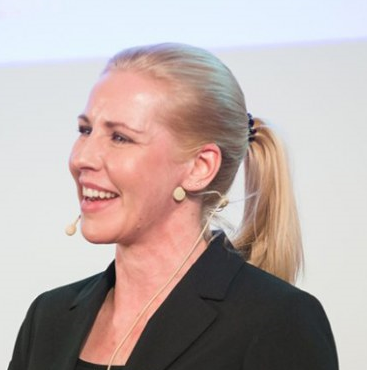 Prof. Leena Ukkonen, Tampere University, Faculty of Medicine and Health Technology, Finland
Prof. Leena Ukkonen, Tampere University, Faculty of Medicine and Health Technology, Finland
Talk Title: Design Aspects for Small Brain-implantable Antennas
Abstract: In this presentation, we will focus on design aspects for small brain-implantable antennas. We will present different antenna topologies for data and power transfer in tissue environment, in vitro and in vivo studies on implantable intracranial pressure (ICP) sensors and give insight and analysis on wireless link reliability. We will also present radio frequency identification (RFID)-based implant platform and communication method. Moreover, we will focus on differences and challenges of in vivo environment compared to laboratory phantoms and tissue models.
Biography: Leena Ukkonen is a Professor and Head of Unit at Faculty of Medicine and Health Technology, Tampere University. Her scientific research is focused on wireless implantable biomedical sensors and wireless communication and power transfer in human body environment. She has an extensive, 20-year research background on antennas and wireless power transfer in harsh environments, novel electronics materials and manufacturing methods, implantable antennas, wearable and textile-based antennas, computational electromagnetic modeling, and wireless implantable biomedical sensors. Especially, her Wireless Identification and Sensing Systems (WISE) research lab has expertise on brain implantable wireless sensors and antennas for wireless brain-machine interfaces. In addition to her scientific research activities, she served in several peer-recognized commissions of trust in the scientific community. Currently, she is the Chair of the Scientific Council for Natural Sciences and Engineering at Research Council of Finland.
Prof. Mahmoud Wagih, University of Glasgow, United Kingdom
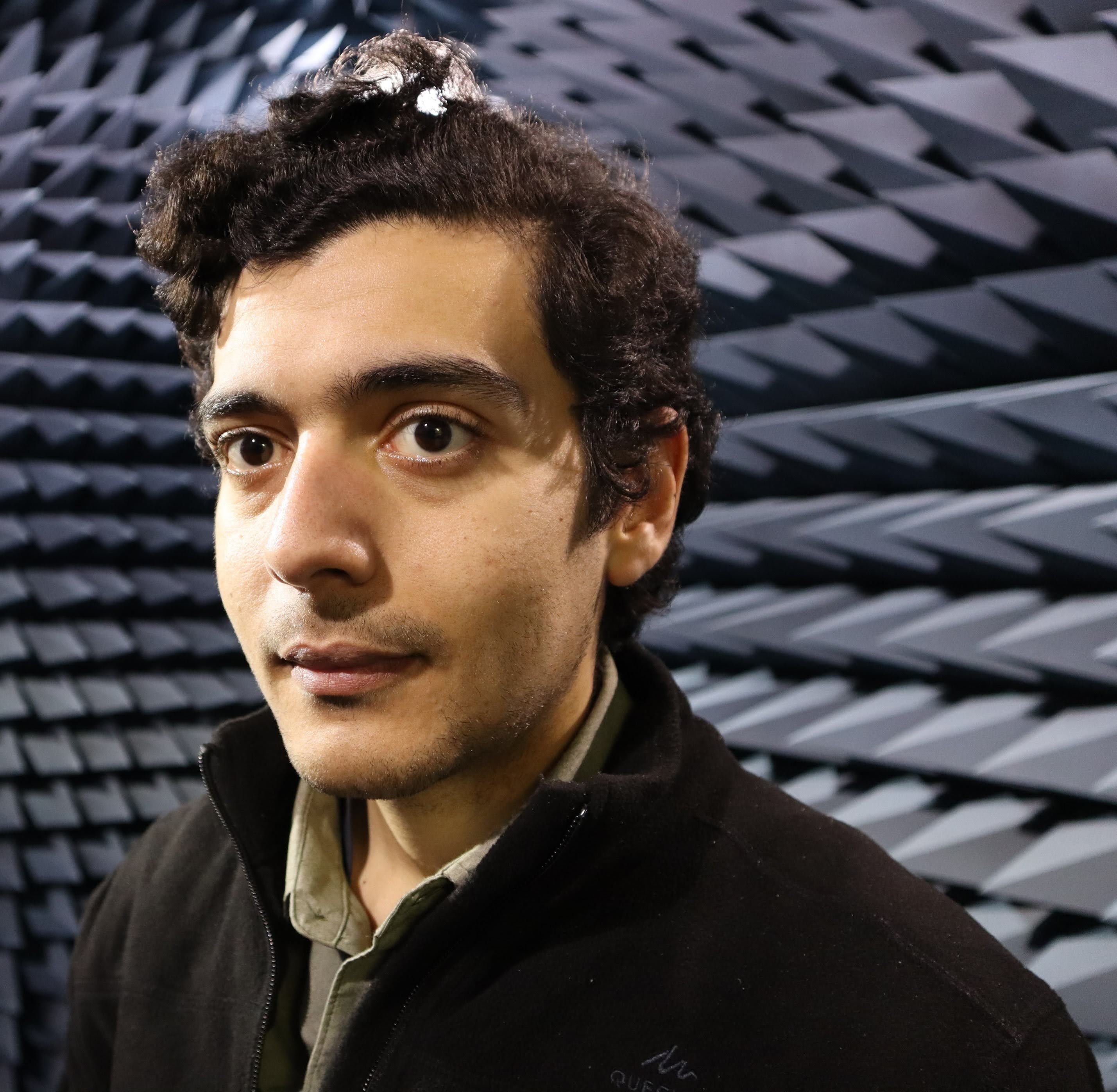 Talk Title: Microwave-Enabled Sustainable Wearables: Devices to Systems
Talk Title: Microwave-Enabled Sustainable Wearables: Devices to Systems
Abstract: Microwaves, the “interconnect” of wireless networks, can enable, rather than solely connect, the next generation of autonomous, sustainable, and wearable-friendly electronics. The role of emerging microwave technologies such as wireless power transfer, RF sensing, and low-power backscatter communication will be introduced for wearable and biomedical applications. Wearables fabricated using flexible and large-area electronics are of immediate use in various healthcare, industrial, and consumer applications. The challenges at the intersection of materials, packaging, and RF and microwave design will be discussed, focusing on the trade-offs between user-friendliness and optimal microwave performance. Life-cycle considerations and sustainable design choices will also be discussed in the context of microwave hardware.
Biography: Mahmoud Wagih is a UK IC Fellow and Assistant Professor (Lecturer) at the University of Glasgow. His research broadly covers RF-enabled sustainable electronics including RF power transfer, RF sensing, and novel RF materials. He has over 100 research papers and received 20 awards, including the EurAAP Best PhD in Antennas & Propagation and several IEEE Best Paper prizes. He is a member of IEEE MTT Technical Committee on RFID and IoT (TC26) and an affiliate of TC25, Wireless Power Transfer. He is an inventor of two patents related to RF power transfer.
Yuchen Xu, Research Scientist at Aizip Inc, Cupertino, California, United States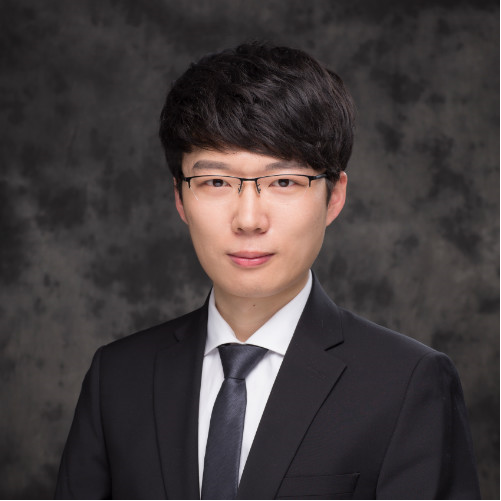
Talk Title: Ear as a new form of brain and body interface for intelligent health applications
Abstract: This presentation explores the ear as a revolutionary interface for the brain and body in intelligent health applications. The ear's unique anatomical proximity to the central nervous system and accessibility make it an ideal site for unobtrusive health monitoring and neurophysiological data collection. We will delve into how this potential is harnessed through the integration of sensor systems, wireless data acquisition, and brain state classification techniques. We introduce an innovative in-ear integrated array of electrochemical and electrophysiological sensors, designed to fit comfortably around a standard earphone. This system effectively monitors lactate levels and brain states using EEG, electrooculography, and electrodermal activity. Demonstrated in exercise scenarios, it successfully detected changes in both lactate concentration and brain activity, highlighting its capability for long-term health monitoring and potential applications in identifying neurodegenerative diseases. Progressing further, we present the wireless electrophysiology data acquisition system, equipped with user-generic dry-contact electrodes for versatile biosignal recording. This system boasts 16 channels, a 3-axis accelerometer, and adaptable data transmission modes, enabling the formation of a body area network (BAN). It has shown remarkable efficacy in capturing alpha brain activity, eye movements, and jaw muscle activity. Additionally, we discuss the application of common-mode spatial filtering to signals from sparse electrodes on untethered subjects, achieving significant accuracy in classifying attentive and resting states. This presentation aims to demonstrate some foundational research efforts in in-ear multi-modal sensing, emphasizing its role in continuous, non-invasive monitoring and cognitive state classification. These advancements not only promise substantial contributions to healthcare innovation but also pave the way for the development of user-generic, portable devices for neurofeedback and holistic health monitoring in a variety of everyday environments.
Biography: Yuchen Xu received the Ph.D. degree in Instrument Science and Technology from Tsinghua University, China. He was a visiting Ph.D. student at the Center for Hearing Research of University of California, Irvine sponsored by the Tsinghua Oversea Scholarship. He received KLA-Tencor PhD scholarship in 2018. He was a postdoctoral researcher at the Integrated Neuroengineering Laboratory (ISN) of University of California, San Diego between 2019 and 2023. He is now a Research Scientist at an AIoT startup Aizip Inc, he is also an associated member of the Institute of Neural Computation (INC) of University of California, San Diego. Yuchen Xu’s research interests include wearable sensing technologies. brain-computer interfaces, IoT for health, sensors and actuators, and edge computation, with a focus on auditory prosthesis and earables.
Dr. Qingxue Zhang, Indiana University and Purdue University at Indianapolis, United States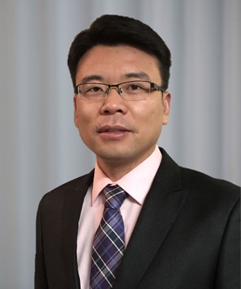
Talk Title: IoT Big Data Orchestration for Precision Medicine
Abstract: Precision medicine is being advanced remarkably by IoT technologies, with both great promises and grand challenges. This talk will firstly give a quick overview of the field, then highlight some efforts we made on medical IoT system building, and in the end envision the future promises in this exciting era. For medical IoT system building, targeting the challenges of large-volume big data harvesting and efficient sparse-pattern mining, this talk will firstly introduce how the reinforcement learning is leveraged to handle optimal configuration of computing/communication/energy schemes in massive-sensor IoT medical systems, and then give a neuromorphic algorithm for neuroscience-inspired spiking neural learning towards sparsity-based energy-efficient inference on IoT devices. Further, this talk will also brief our extensive efforts on efficient deep learning architecture exploration, medical signal monitors, medical signal and image processing, in the context of IoT big data. This talk, overall, will depict a picture of IoT big data orchestration through selected studies, among our efforts, thereby demonstrating promising potentials towards big data-empowered precision medicine and smart world.
Biography: Dr. Zhang has over fifteen years’ experience in academia, industry, and medical, with his postdoc research at Harvard, products R&D in ICT, and Ph.D. research at University of Texas at Dallas. He is an assistant professor from 2018 at Purdue School of Engineering & Technology, on the joint campus of Indiana University and Purdue University at Indianapolis, Indiana, USA. He is interested in medical IoT/Wearable and medical AI technologies for big data-empowered precision medicine. He is a recipient of the NSF CAREER Award, the Featured Journal Article Award in IEEE Access, the Best Paper Award in UEMCON2017, the Early-Career Travel Award in AHA2020, and the Favorite Professor Award in 2019. He has over 58 journal/conference/patent publications. He also serves as Panelists for over ten NIH/NSF/NIST study-sections/panels, chair/committee for multiple IEEE Conferences/workshops, and the AE for multiple IEEE Journals. He is a senior Member of IEEE.



